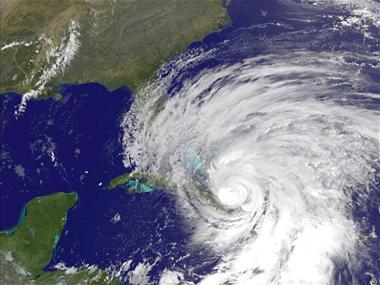
While the 2014 Hurricane season is expected to be “below normal” according to the National Oceanic and Atmospheric Administration, being prepared is still essential as a few of the most powerful hurricanes on record have hit during “below normal” seasons including Camille (1969). During “normal” expected seasons Andrew (1992) and Sandy (2012) caused mass devastation and destruction.
"Below normal" means less quantity of storms, not necessarily weaker storms. The lower number of hurricanes expected is based on cooler tropical waters in the Atlantic and a developing El Nino. However, these variables could change.
Hurricane winds can exceed 155 miles per hour, but they can also cause tornadoes, microbursts, storm surges, and extensive damage from rainfall. Floods and flying debris can be deadly and destructive, as witnessed after Floyd (1999). Therefore key steps should be taken to ensure your municipality is prepared for a hurricane:
- Know the elevation levels in your city or county to identify the flood-prone areas.
- Levees and dams should be checked for strength and repair needs.
- Evacuation routes should be mapped out and communicated to citizens.
- Emergency shelters should be ready with personnel and supplies.
- Identify who in your community will need help getting to shelters and plan emergency transportation.
- Animal shelters should be in place if emergency shelters do not provide pet care.
- Generators should be on hand for police, fire, hospitals, emergency shelters, and other essential buildings during the storm.
Check out ready.gov for more information on how you can be ready for the season.
New, Reduced Membership Dues
A new, reduced dues rate is available for CAOs/ACAOs, along with additional discounts for those in smaller communities, has been implemented. Learn more and be sure to join or renew today!
